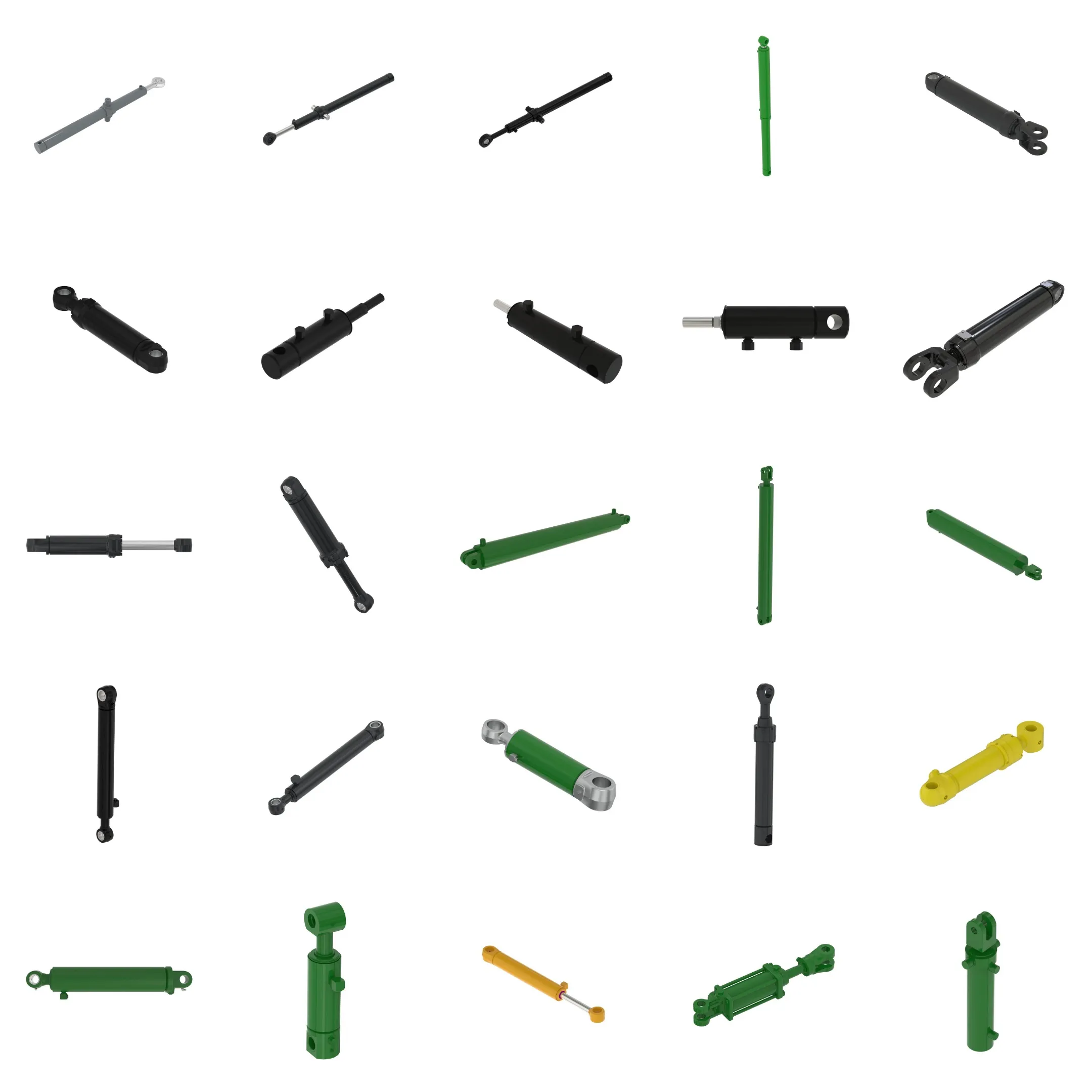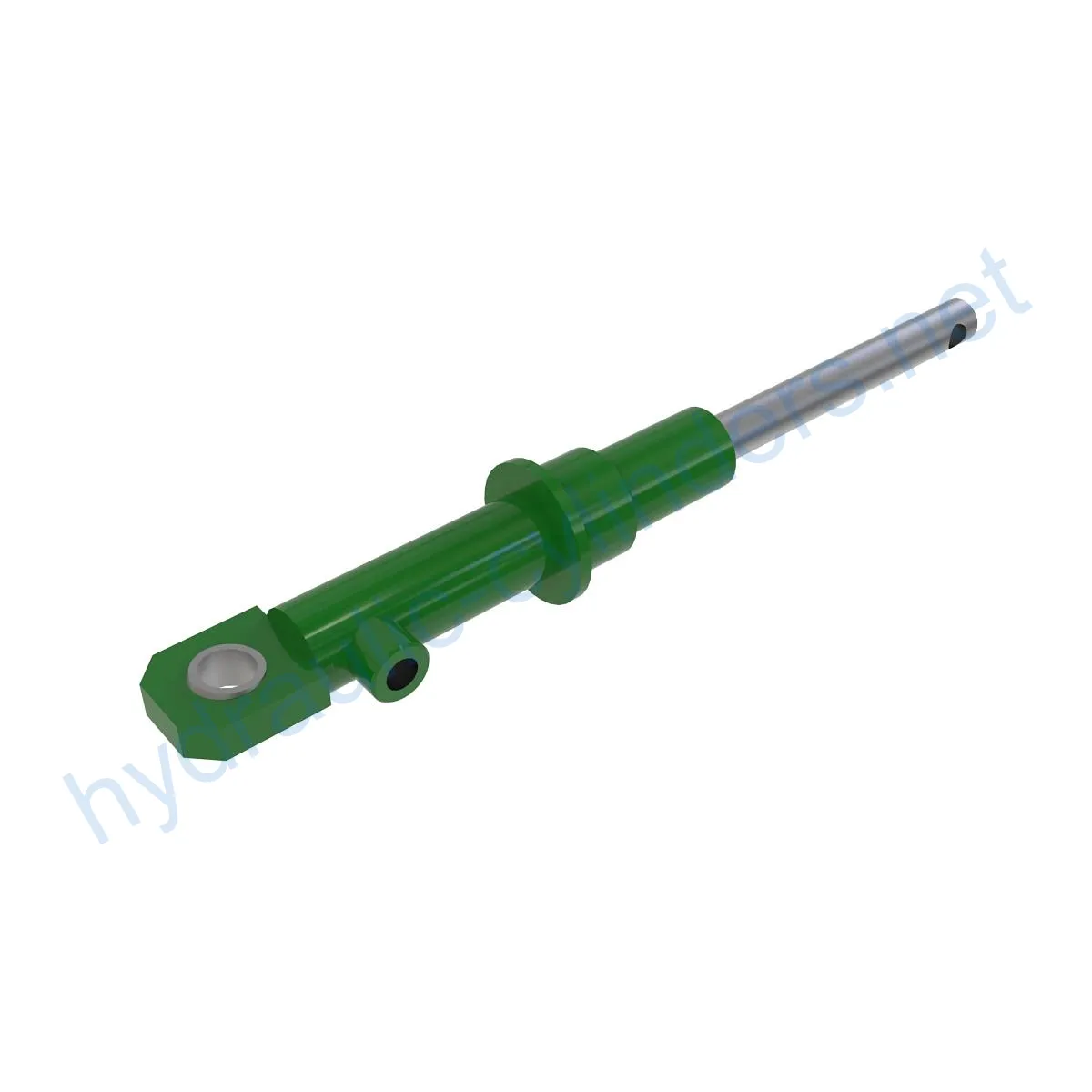Replacement Of EPC201270 Hydraulic Cylinder
Jako jeden z výrobců, dodavatelů a vývozců hydraulických válců nabízíme hydraulické válce a mnoho dalších výrobků.
Kontaktujte nás, prosím, pro podrobnosti.
Mail:sales@hydraulic-cylinders.net
Výrobce, dodavatel a vývozce hydraulických válců.
Replacement Of EPC201270 Hydraulic Cylinder
Definition:
The Replacement Of EPC201270 Hydraulic Cylinder is a crucial component in various hydraulic systems. It is responsible for converting fluid power into mechanical motion, allowing for the movement and operation of different machinery and equipment.
Specifications:
– Weight: 4.18 lb
– Height: 2.5 in
– Width: 3.5 in
– Length: 13.1 in
Models:
– 1903
– 1905
Product Features:
1. Improved Equipment Performance: Replacing damaged or worn hydraulic cylinders can restore the normal operational capability of equipment, ensuring optimal performance in various applications.
2. Enhanced Safety: Regularly replacing hydraulic cylinders can reduce safety hazards caused by cylinder failures, ensuring the safety of both operators and equipment.
3. Overload Protection: New cylinder designs often incorporate better overload protection mechanisms, enhancing safety during operation.
4. Quick Installation: Modern hydraulic cylinders are designed with ease of installation and replacement in mind, minimizing downtime.
5. Standardized Components: Many hydraulic cylinders are standardized products, making it easier to obtain replacement parts from the market.
Our Production Capabilities:
We have the capability to produce this hydraulic cylinder, offering a perfect replacement for the existing ones. Our products meet high-quality standards and are designed to provide reliable performance.
Applications:
1. Excavators: Hydraulic cylinders in excavator arms or buckets may get damaged due to prolonged use or overloading, requiring replacement to restore normal operation.
2. Cranes: Hydraulic cylinders in crane boom arms can experience wear and tear during frequent lifting and lowering processes, necessitating regular replacement for safety.
3. Tractors: Front-end loader hydraulic cylinders in tractors may develop leaks or performance decline during continuous lifting and tilting operations, requiring replacement.
4. Harvesters: The hydraulic system in harvesters operates under high pressure, and fatigue can damage the cylinders, requiring timely replacement to maintain operational efficiency.
5. Automated Production Lines: Hydraulic cylinders are used to control robotic arms and other automated equipment. Any cylinder failure can impact production efficiency, requiring immediate replacement.
6. Die-casting machines: Hydraulic cylinders in die-casting machines may experience performance deterioration under high pressure and temperature, necessitating regular replacement to ensure product quality.
7. Mining Equipment: Hydraulic cylinders are used for lifting and moving heavy loads in mining equipment. Due to the harsh working environment, regular inspection and replacement are necessary to avoid equipment failure.
8. Bulldozers: Wear on hydraulic cylinders in bulldozer push arms can reduce pushing capability, necessitating timely replacement to maintain operational efficiency.
Maintenance Tasks:
To ensure the longevity of the hydraulic cylinder, the following maintenance tasks should be performed regularly:
1. Regular inspection: Inspect the cylinder for any signs of leaks, damage, or wear.
2. Proper lubrication: Apply an appropriate amount of hydraulic oil for lubrication.
3. Seal replacement: Replace seals if they show signs of wear or damage.
4. Calibration check: Periodically check and adjust the cylinder’s calibration to ensure accurate operation.
Safety Considerations and Environmental Factors:
When working with hydraulic cylinders, it is essential to follow safety precautions to prevent accidents and ensure environmental protection. Proper handling, maintenance, and disposal of hydraulic fluids are vital to minimize environmental impact.
Fault Diagnosis and Common Issues:
1. Leakage: If hydraulic fluid is leaking from the cylinder, it may indicate seal damage or a faulty connection.
2. Slow operation: Sluggish cylinder movement can be caused by insufficient hydraulic fluid or internal component wear.
3. Cylinder drift: If the cylinder drifts or fails to hold its position, it may be due to internal valve or seal problems.
4. Excessive noise: Unusual noises during cylinder operation can indicate component wear, misalignment, or contamination.
Troubleshooting and Solutions:
1. Leakage: Inspect seals and connections for damage. Replace faulty seals or tighten loose connections.
2. Slow operation: Check hydraulic fluid levels and refill if necessary. If the issue persists, inspect internal components for wear and replace as needed.
3. Cylinder drift: Check valves and seals for proper function. Clean or replace faulty components accordingly.
4. Excessive noise: Inspect the cylinder for worn or damaged parts. Clean or replace components as necessary.
Preventive Measures:
1. Regular maintenance: Perform routine inspections, lubrication, and seal replacements to prevent issues before they occur.
2. Proper installation: Provide guidance on correctly aligning the cylinder during installation and recommend using appropriate mounting brackets for stability.
3. Recommended inspection, repair, and replacement procedures: Advise following manufacturer guidelines for inspection, repair, and replacement processes.
4. Parts replacement and rebuilding services: Offer replacement parts and rebuilding services to extend the lifespan of the hydraulic cylinder.

Design Considerations and Selection Criteria:
When selecting a hydraulic cylinder, the following design considerations are essential:
1. Load-bearing capacity: The cylinder should be able to handle the maximum load it will encounter.
2. Sealing efficiency: High-quality seals should be used to prevent leaks and ensure smooth operation.
3. Durability: The cylinder should be constructed with materials and coatings that resist wear and corrosion.
4. Safety: Design features should prioritize operator and equipment safety.
5. Maintainability: The cylinder should be designed for easy maintenance and repair.
Sealing and Lubrication:
To ensure optimal performance and longevity, various sealing and lubrication practices can be implemented:
– Use different sealing components, such as piston seals and rod seals, made from wear-resistant materials like polyurethane or nitrile rubber.
– The cylinder body and threaded end surfaces should undergo precise treatment to enhance wear resistance.
– Regularly lubricate the cylinder with the appropriate hydraulic oil to ensure smooth operation.
Regular Inspection and Preventive Maintenance Measures:
To prolong the lifespan of the hydraulic cylinder, the following preventive maintenance measures should be taken:
1. Regular inspection: Inspect the cylinder for any signs of leaks, wear, or damage.
2. Proper lubrication: Apply the recommended amount of hydraulic oil for lubrication.
3. Seal replacement: Replace seals if they show signs of wear or damage.
Correct Installation Guide:
Proper installation is crucial for the optimal performance of the hydraulic cylinder. Follow these guidelines for correct installation:
1. Align the cylinder correctly according to the manufacturer’s instructions.
2. Use suitable installation brackets to secure the cylinder in place.
3. Follow recommended inspection, repair, and replacement procedures.
4. Offer tips to enhance the lifespan of the hydraulic cylinder.

In conclusion, it is important to organize the article logically, using subheadings for easy navigation. Incorporate relevant images or charts to enhance understanding. The content should be clear, concise, and suitable for readers with varying technical knowledge levels. Finally, provide a comprehensive introduction to our company, highlighting our expertise, international certifications, customized services, production capabilities, and after-sales support.

Author: lyl
Take a Tour of Our VR Factory:
Take a tour of our VR factory with the following
Hydraulic Cylinder Application:


